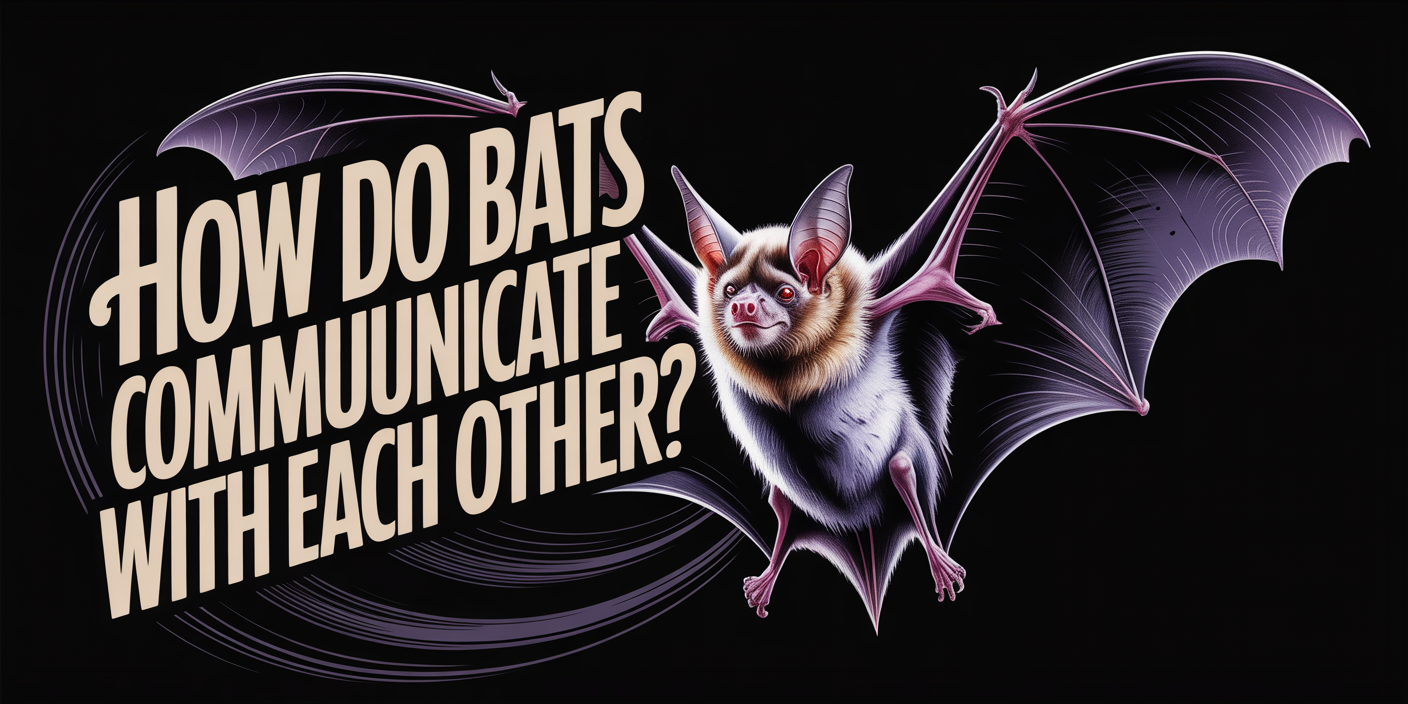Bats communicate with each other using high-frequency vocalizations, body movements, and scent cues. These signals help birds coordinate flight, find food, bond socially, and stay organized in colonies.
Bats may fly silently through the night, but they’re actually some of the most vocal mammals on Earth. Their communication goes far beyond spooky squeaks, it’s a complex mix of echolocation, chatter, scent, and subtle body signals used to navigate life in the dark.
In this guide, we’ll break down exactly how bats communicate with each other, from locating their roost-mates to warning rivals, and why understanding these behaviors matters, especially if they’re nesting near your home.
What Methods Do Bats Use to Communicate?
Bats use a combination of vocal sounds, body movements, and scent signals to interact with one another. These methods vary by species and can serve purposes like finding roosting partners, warning off intruders, or caring for young within a colony.
Some bats rely heavily on sound-based communication, while others also use physical nudges, grooming, or chemical cues to reinforce social structure. This layered form of communication helps maintain order in crowded roosts and ensures bats can function as a coordinated group in the dark.
What Is Echolocation and How Is It Used in Communication?
Echolocation is a navigation system where bats emit high-frequency sound waves and listen for the echoes that bounce off objects around them. This helps them detect obstacles, locate prey, and fly with precision in complete darkness.
While echolocation is mainly used for movement and hunting, some species subtly adjust their calls when other bats are nearby. These variations help avoid collisions and signal presence, indirectly serving as a form of communication during group flights or while sharing hunting grounds.
Do Bats Use Vocal Sounds to Interact Socially?
Yes, bats produce a wide range of vocalizations specifically for social interaction. These include mating calls, distress signals, warning cries, and group-coordination sounds, many of which are outside the range of human hearing.
Some bat mothers even have unique vocal “signatures” that their pups learn to recognize, allowing them to reunite in crowded roosts. These high-frequency squeaks and chirps play a huge role in bonding, territory defense, and maintaining order within bat colonies.
Can Bats Communicate Through Body Movements or Smells?
Absolutely. While vocal sounds are key, bats also use physical gestures like wing flutters, grooming, or nudging to send subtle messages to one another. These behaviors help establish trust, reinforce social bonds, or express dominance without making a sound.
Scent is another powerful tool in bat communication. Many species have scent glands that release unique chemical markers, allowing them to mark territory, identify individuals, or signal reproductive status within the group.
Why Is Bat Communication Important in Colonies?
Bat colonies can range from a few individuals to thousands living in tight quarters, so communication is essential for maintaining structure and cooperation. Through vocal cues, scent signals, and body movements, bats can organize group foraging, avoid conflict, and protect their young.
Strong communication also helps bats stay safe from predators and respond quickly to threats like weather changes or disturbances in the roost. Without these interactions, colonies would become chaotic, making survival much harder for these highly social mammals.
What Does Bat Communication Mean for Homeowners?
If bats have moved into your attic or walls, their chatter might be the first thing you notice. Homeowners often hear scratching, fluttering, or high-pitched squeaks, especially at dusk or dawn, when bats are most active or communicating within their group.
These sounds can signal the presence of a growing colony, which increases the risk of droppings, odor buildup, and structural damage. Understanding bat communication helps identify infestations early and makes it easier to explain the issue when reaching out for professional help.
How AAAC Wildlife Removal Can Help With Bats
If you’re hearing unusual sounds in the attic or spotting droppings near your roofline, there’s a good chance bats have made themselves at home. At AAAC Wildlife Removal, we specialize in safe, humane bat removal that protects both your property and the bats themselves.
Our team inspects your home for entry points, uses exclusion methods to gently guide bats out, and seals up gaps to prevent them from returning. We also offer full cleanup and sanitation services to remove hazardous waste and restore your attic to a safe, livable condition.
Understanding Bats and When to Call for Help
Bat communication is more than just noise, it’s a key part of how these creatures survive, organize, and thrive in large colonies. From ultrasonic calls to scent-based signals, bats are constantly sharing information with each other, even if we can’t always hear it.
If that chatter starts happening in your attic, it’s time to take action. Call AAAC Wildlife Removal to safely handle the issue before it turns into a full-blown infestation.
Ready to Stop the Chatter in Your Attic?
If you’re hearing squeaks, scratches, or fluttering in your walls or ceiling, don’t wait for the colony to grow. AAAC Wildlife Removal is here to help you evict bats the humane, professional way.
Call us today to schedule a bat inspection and get expert help sealing up your home before things get out of hand. Let’s keep your attic peaceful and your family protected.




